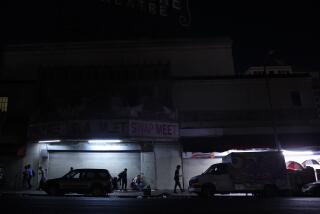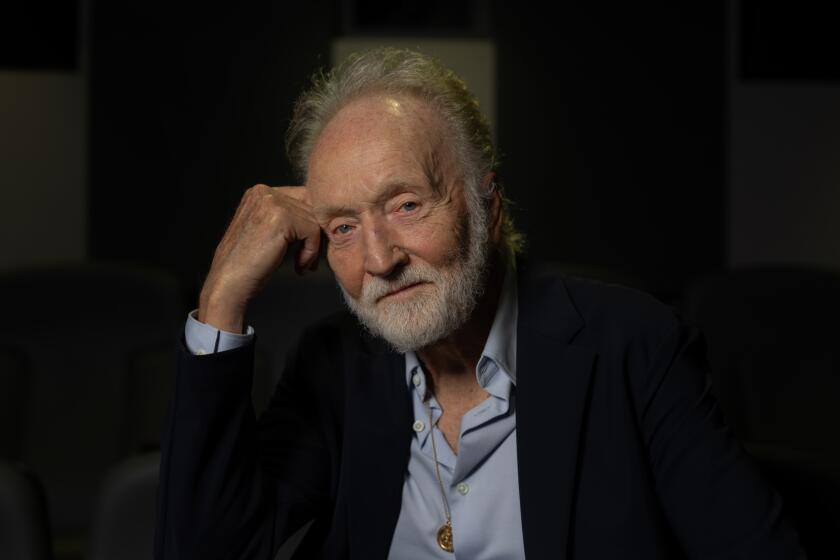A voice at last for ‘Central Park Five’
NEW YORK — They were five men — boys, really — accused of a violent rape. They were prosecuted aggressively by district attorneys and vilified by a tabloid press, then sent to prison for as many as 13 years.
In 1989, the case of the Central Park Five, as the attack on a 28-year-old white investment banker in uptown Manhattan has come to be known, roiled the country, touching on race and class and fears about crime.
But the defendants — all black or Latino, none older than 16 — didn’t commit the attack on the Central Park jogger. They were the victims of coerced confessions and authorities eager for scapegoats.
And in 2002, after the five had all spent years in jail, a previously unknown man admitted to beating and sexually assaulting the woman. All five of the convictions were vacated.
PHOTOS: 2012 Film Independent Spirit Award Nominees
That dark period in our racial history is recounted by nonfiction maestro Ken Burns and two co-directors in the documentary “The Central Park Five,” which opens in Los Angeles Friday. The movie is harrowing and socially relevant, equally startling for its depictions of those who carried out the injustice as it is for its portrayals of those on whom the injustice was visited. The five men have now moved from being poster children for a shadowy evil to symbols of the effects of racist ignorance.
“To go from being hunted down — you’re envisioned with pitchforks and stakes just because people were convinced of a lie — to how we’re treated now because of this movie, it’s just therapeutic,” said one of the accused, Yusef Salaam. “And you have to remember, we weren’t given any kind of real therapy all these years.”
The Central Park Five — Salaam, Antron McCray, Kevin Richardson, Raymond Santana and Korey Wise — gathered recently for an interview with The Times, the first time they’ve all been together since their arraignment 23 years ago. (Most were just acquaintances at the time.)
As men in their late 30s, they are mostly at peace with what happened. They are grateful for the vindication, and the new attention. “Before [this film] we didn’t have a voice,” said Richardson. “Now we do.”
Even the name given them has been flipped on its head, a sign of what a lot of time--and, it should be noted, a lot of pain--has wrought.
“Back in 1989, the Central Park Five had this negative stigma about it,” Santana said. “Now it’s synonymous with a changing of the tides.”
PHOTOS: Celebrity portraits by The Times
It was an extensive legal effort that led to their convictions being vacated, and it came after all five had already served their time on the Central Park charges. Their bid for a public rehabilitation has taken further steps since then thanks to Burns and his two co-directors, daughter Sarah and her husband, David McMahon.
Sarah Burns became obsessed with the case while interning at a law firm nine years ago. “It quickly became clear to me we didn’t know what we thought we knew,” she said in an interview. She eventually wrote a 2011 book on the subject and then, with her two collaborators, made this documentary. The movie is filled it with a range of contemporary interviews, including from the five, as well as a deep reserve of archival footage. (No detective or prosecutor involved with the case was willing to be interviewed.)
What the filmmakers show is that while the boys were loosely part of a group of dozens who had been in the park creating mischief that night, they were nowhere near where the rape took place. Their confessions, which occurred after many hours of brutal questioning and intimidation, was a function of them simply being scared kids who wanted to go home.
“I don’t think people knew what it was like to be in that room,” said Wise.
False confessions was one of several ways the public was misled about the case, said filmmakers. (Many major details offered in the respective confessions, for instance, did not square with one another.)
“There were a lot of contradictions we all just bought hook, line and sinker,” Ken Burns said in an interview. He added, “After 13 years of tragedy we found out the truth. But the truth doesn’t get the coverage that the lurid sensationalism did.”
Premiering at the Cannes Film Festival to rave reviews, “The Central Park Five” is a fascinating procedural that indicts not only careless and corrupt officials but the notion of groupthink itself. Complicit in that were public figures — from then-mayor Ed Koch, who called the incident the “crime of the century,” to prosecutor Linda Fairstein — as well as a populace eager to put a face on the villainy. As New York Times metro reporter Jim Dwyer says in the film, “These men were proxies for all sorts of agendas. And truth, reality and justice were not part of it.”
But if “The Central Park Five” tells of a period in American history when racial fears regularly clouded good judgment, it may not be, in a more general sense, a period film.
The late 1980s can certainly seem like another era. The Central Park attack happened in a time of paranoia and racial unrest, just after Tawana Brawley and Howard Beach, and not long before Rodney King and the Crown Heights riots. Cities were battlegrounds both literal and figurative.
The world has changed since then. Apartments in Harlem, where the Central Park Five lived, go for millions. Tourists flood Manhattan, cheerfully packing the subways cars where Bernhard Goetz once opened fire. Interrogations themselves are even different — NYPD officers are required to record the entire questioning, not just the confession itself.
But all of that may be a coating on an uglier reality, say those involved with this film.
“Cities are recognizably different places. But the larger problems haven’t changed that much,” said McMahon. “We haven’t changed our instincts when it comes to young people of color.”
Santana added, “People have made great strides. But you look at Trayvon Martin and stop-and-frisk and all the racial profiling that still goes on, and it’s not hard to imagine another Central Park Five.”
There’s a more literal way the case lives on. The city has subpoenaed the original footage from the documentary, citing a civil suit that several of the accused have filed against the city. Ken Burns said he’s started a legal defense fund to fight the subpoena, despite a belief that, like other documentarians, he doesn’t want to publicly advocate for his subjects.
“The filmmaking and legal community doesn’t want us to do this and we don’t want to do this. It’s a hugely expensive proposition. But we’re going to do it.” Burns said.
The lives of the five have changed significantly since those dark days two decades ago. Several have received associates or higher degrees. Others have married. McCray even has six children.
“It’s hard not to be angry sometimes at this story,” Santana said. “But we’ve made lives for ourselves and moved on.”
PHOTOS AND MORE
VIDEO: What movies to see during the holidays
The Envelope: Awards Insider
PHOTOS: NC-17 movies: Ratings explained
More to Read
Only good movies
Get the Indie Focus newsletter, Mark Olsen's weekly guide to the world of cinema.
You may occasionally receive promotional content from the Los Angeles Times.











